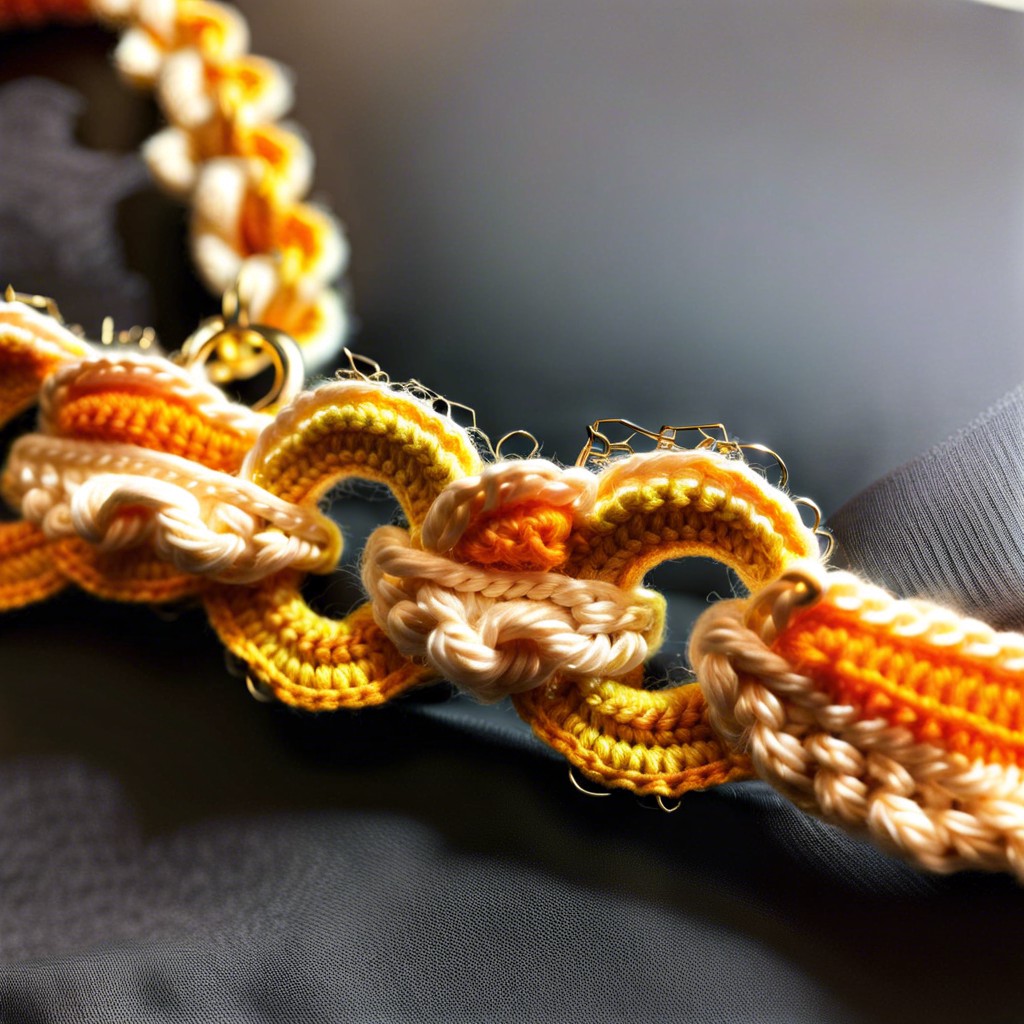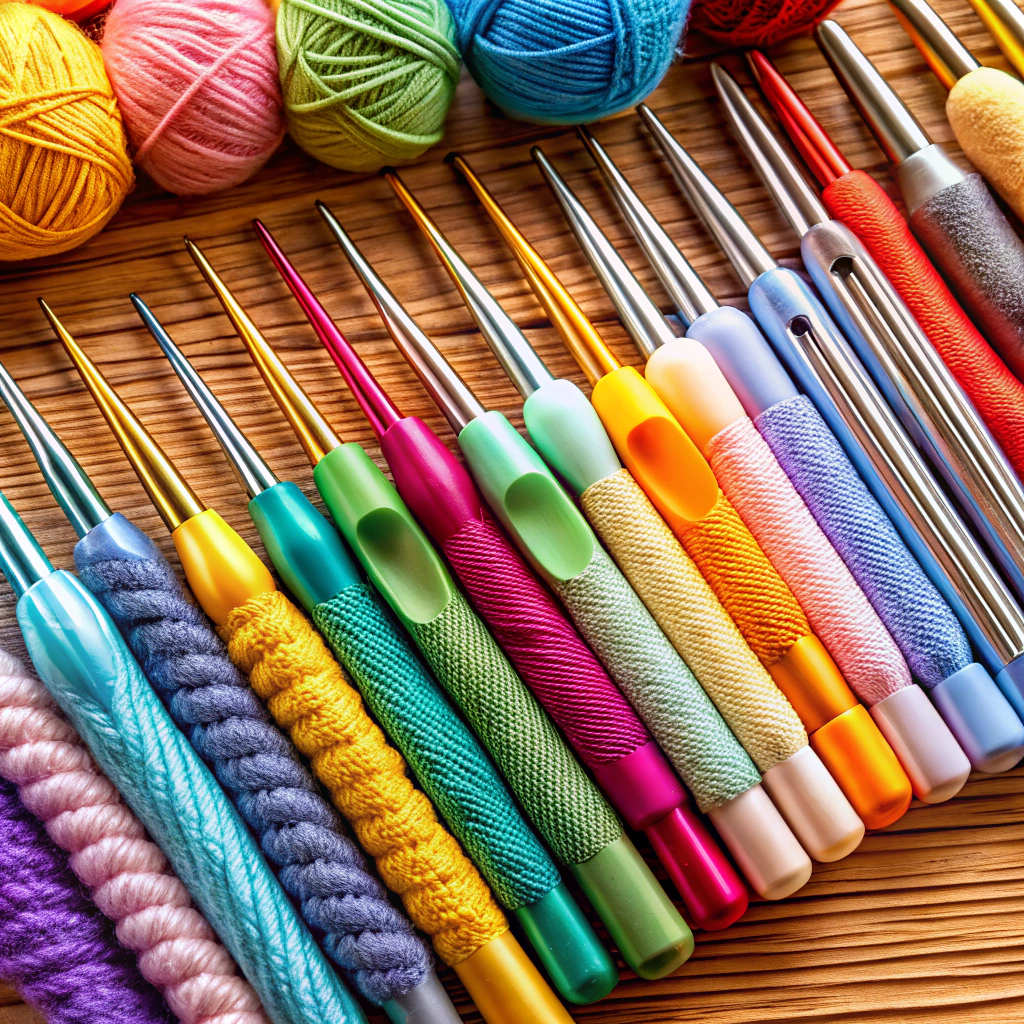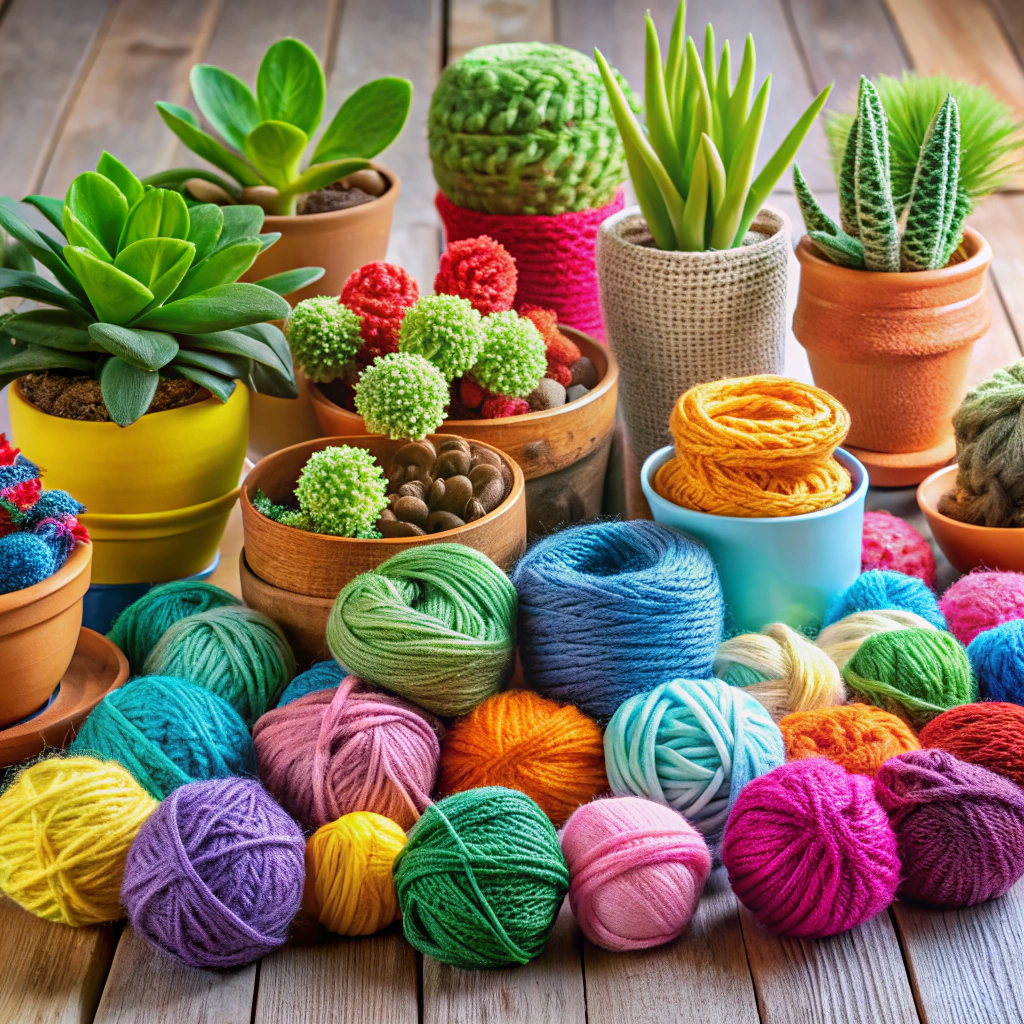Learn to distinguish the right side from the wrong side in crochet to ensure your projects look professionally finished and consistent.
Ever wonder if you’ve been showing your “Friday face” on a Monday project? Diving into the enigma of “right side vs wrong side” in crochet, this guide will turn your crafting woes into “aha” moments. From chain tails to row counts, and figuring out rounds vs squares, you’ll discover the treasure map to that elusive “right” side. Hold tight, as we unearth the secrets to having your work look top-notch, no matter the stitch. Ready to crochet with confidence? Your quest begins now!
Key takeaways:
- Right side showcases neat, defined stitches.
- Wrong side appears shabbier and less textured.
- Chain tail helps identify the right side.
- Odd-numbered rows typically indicate the right side.
- Use stitch markers for clarity in projects.
Identifying the Right Side By the Chain Tail

The chain tail is your best buddy when figuring out which side is which. Here’s a quick guide:
First off, when you start with your foundation chain, the dangling tail usually falls on the left side, assuming you’re right-handed. For lefties, it’s the opposite.
Next, after a few rows, check where the tail is hanging out. If it’s still chilling on the left (or right for left-handers), you’re looking at the right side.
Also, if you’re working in rounds, the chain tail hangs down from the center of the first round, marking the right side.
Remember, the tail doesn’t lie. Keep it in mind, and you’ll never be wrong-sided again.
Examining the Row Count for Clues
Crochet patterns often specify the right and wrong sides at different rows. Odd-numbered rows typically represent the right side, whereas even-numbered rows represent the wrong side. So, if you’ve just finished Row 3, congratulations! You’re staring at the right side.
Count your rows when in doubt. If on Row 4, flip that bad boy over. Cycle through counting to stay on top of which side you’re working.
Make a habit of checking the row count as you go. It’s a small effort with a gorgeous payoff.
Differentiating Sides When Working in the Round
When working in the round, identifying the correct side can be a piece of cake if you know what to look for. Here are some handy pointers:
- Look at the beginning tail. Often, it will sit on the wrong side, subtly whispering,”Hey, I’m the back!”
- Observe the stitches. The right side usually has stitches that look neater and more uniform compared to the back.
- Check your project’s surface. The design or pattern you intend to showcase is generally on the right side.
- Use a stitch marker on the right side. This eliminates any side-switch confusion as you crochet away.
Remember, in the round, the difference between sides is like night and day once you know these tricks!
Right Side As the Best-looking Side
In crochet, the right side is typically the side you want the world to see. It’s the side where your stitches look neat and orderly. Think of it as your project’s ‘good hair day.’
The right side often showcases the details of the stitch pattern more effectively. For a project like a shell-stitch blanket, the shells pop more on the right side. It’s the equivalent of the front of a theater set—where all the action and aesthetics happen.
Ever wonder why your amigurumi looks slightly off? You might be showing the wrong side. In textured stitches like bobbles or popcorns, they protrude better on the right side, enhancing the 3D effect.
Remember, the right side isn’t always about looking perfect; it’s about looking intentional. With time, spotting these differences becomes second nature.
Right Side Identification Varying By Stitch Type
When using different crochet stitches, the right side can look quite distinct:
Single crochet (sc): Look for a series of neat little “V” shapes. They sit prim and proper on the right side.
Double crochet (dc): The right side will showcase lovely and consistent “stacks” of stitches. Think of mini skyscrapers.
Front post and back post stitches: Here’s where it gets tricky. Those textured beauties like cables and ridges? They’re usually front and center on the right side for all to admire.
Stitch patterns like shell or bobble: The right side will feature the textured parts plump and proud, not hiding in the back.
Fancy lacework: The right side will display the intricate, open parts clearly. You want those yarn flourishes to shine.
Crochet with care; make sure to glance at your stitches often. You’ll soon become a right side detective!
Importance of Knowing the Correct Side
You might think, “Why all the fuss about which side is which?” Well, it can make a world of difference in your final product.
First off, patterns often rely on the right side being, well, right! If you’re working a textured stitch or colorwork, the pattern’s beauty shines only when the correct side is front and center.
Second, consistency is key. Imagine a glorious crochet blanket with inconsistent sides. Not as charming as you’d hoped, right? Keeping track ensures a polished, professional look.
Lastly, it affects assembly. Seam up a sweater with mismatched sides, and you may end up with a quirky fashion statement. And not the good kind!
So, sides matter more than you’d think. Your project will thank you.
Visual Differences Between Right and Wrong Sides
Sometimes, it’s like playing detective, spotting the tell-tale signs that scream, “I’m the right side!” versus the wrong side. One glaring hint is the texture. The right side is usually smoother and more defined, like it put in extra effort to look spiffy. The wrong side? A bit shabbier, like it just rolled out of bed.
Another subtle clue might be those stitches. They tend to relax and stretch their legs on the right side, while on the wrong side, they huddle together like they’re plotting something.
Look closely at colors too. If you’re working with variegated yarn, the right side will often flaunt the colors in their full glory, while the wrong side shows off a muted version, almost like it’s the understudy.
When it comes to fancy stitches like the bobble or the popcorn, it’s a bit of a show-off situation. They pop and bobble front and center on the right side, but on the wrong side, they flatten out, losing their 3D magic.
Techniques to Switch Sides If Needed
Sometimes you find out hours into a project that you’ve been working on the wrong side. Uh-oh, right? No worries, these are skills every crocheter can master.
Flip it over. Yep, it’s that simple. Just flip your work and continue from there. Maybe give your piece a reassuring pat—you’re back on track.
If you’re working in rows and spot the issue, another option is to frog a row or two (oh, the dreaded frogging) until you’re back where the sides switched, and then continue correctly.
Consistent stitch markers can be lifesavers. Simply place one at the beginning of your right-side rows. Think of it as a friendly reminder: “Hey, this is the pretty side!”
Lastly, in circular projects, you might need to turn your work inside out, like a sock puppet waking up. That’ll reveal the right side without any extra drama.
Relax. It’s all about enjoying the crochet journey, even with a few detours.
Common Projects and Their Right-side Importance
Some crochet projects where the right side matters more than your grandma’s cookie recipe include blankets, amigurumi, and clothing. Let’s dive into the why.
Blankets: The right side of a blanket should flaunt your neat stitchwork like it’s prime time TV. This side typically has more defined, prettier stitches perfect for showing off that popcorn stitch.
Amigurumi: For these adorable yarn creatures, the right side is crucial. It’s where you’ll want all those beautiful, even stitches. Nobody likes a lopsided bunny.
Clothing: When making wearables, the right side takes the stage. Your cardigans, sweaters, and scarves need to broadcast their best texture and pattern. Plus, seams look way better hidden on the wrong side.
Master these, and your crochet endeavors will be smoother than butter on warm toast.
Tools and Tricks to Remember the Right Side
Keep a stitch marker handy. Pop it on the right side of your work to avoid confusion. Simple, yet effective.
Try a safety pin. Yes, the humble safety pin. Attach it to the right side, and it won’t budge.
Got contrasting yarn? Tie a small piece to the beginning of the right side. Easy to spot.
Invest in speciality markers. Some are designed specifically for this purpose—they’ll even say “right side” on them. Can’t argue with a label.
When in doubt, take a photo. Snap a quick pic of the right side before you take a break. Your future self will thank you.




